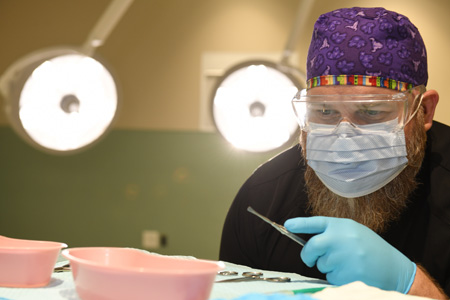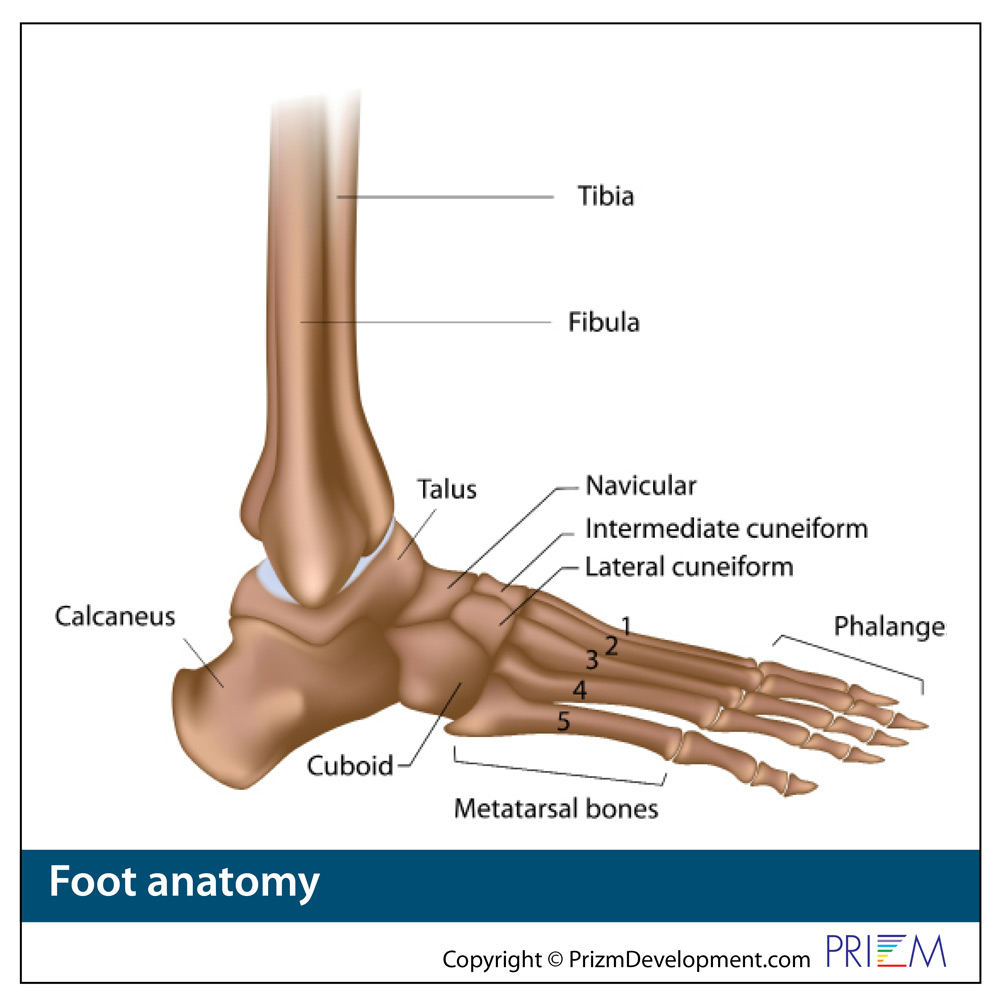Ankle Replacement
![]() The ankle joint supports our entire body when we walk, run or stand. Yet, this joint is unique in that it has the smallest surface area of all the major weight-bearing joints in the body. Because it has so much weight on it and its small size, it is prone to injury and arthritic changes.
The ankle joint supports our entire body when we walk, run or stand. Yet, this joint is unique in that it has the smallest surface area of all the major weight-bearing joints in the body. Because it has so much weight on it and its small size, it is prone to injury and arthritic changes.
Since the ankle is a weight-bearing joint that absorbs the body's full impact, pain from an injured or diseased ankle can be especially severe and debilitating. Learning more about ankle treatment options is the first step towards reducing your pain and restoring your mobility.
In the past, patients with chronic ankle pain from rheumatoid arthritis, osteoarthritis, or trauma had limited treatment options. Just like total knee and total hip replacements, which have helped numerous patients over the years, total ankle replacement is performed to provide a less restricted option to ankle arthritis sufferers.
Ankle replacement is most often recommended for patients with:
- Advanced arthritis of the ankle
- Destroyed ankle joint surfaces
- An ankle condition that interferes with daily activities
Pain that limits walking or standing is the most common symptom of those considering ankle surgery. Typically, if you are considering ankle replacement, previous efforts to control your pain using medication or braces have failed. You may have also considered ankle fusion and decided that it is not the alternative for you.
Joint replacement in the ankle, much like the hip and knee, can provide relief from arthritic pain while maintaining joint motion. This motion allows for more normal walking while preventing the strain and stress that will occur to other nearby joints following ankle fusion.
[Top]
 Treatment Options
Treatment Options
You should discuss other methods for treating your ankle pain with your Celebration Orthopaedics surgeon. Treatments for ankle arthritis range from a variety of conservative treatment methods to surgery. Nonsurgical treatment options include:
- Pain relievers and anti-inflammatory medications to reduce swelling
- Shoe inserts (orthotics) or custom-made shoes
- An ankle-foot orthosis (AFO)
- A brace or a cane
- Physical therapy and exercises
- Medications, such as a steroid medication injected into the joint
If arthritis doesn't respond to nonsurgical treatment, surgical treatment might be considered. The choice of surgery will depend on the type of arthritis, the impact of the disease on the joints, and the location of the arthritis. Surgery performed for arthritis of the foot and ankle includes arthroscopic debridement, arthrodesis (or fusion of the joints), and arthroplasty (replacement of the affected joint).
Arthroscopic surgery may be helpful in the early stages of arthritis. Arthrodesis fuses the bones of the joint completely, making one continuous bone. This surgery is typically quite successful. The biggest long-term problem with fusion is the development of arthritis at the joints adjacent to those fused. This occurs from increased stresses applied to the adjacent joints.
In arthroplasty, the damaged ankle joint is replaced with an artificial implant (prosthesis). Although not as common as a total hip or knee joint replacement, advances in implant design have made ankle replacement a feasible option for many people.
In addition to providing pain relief from arthritis, ankle replacement offers patients better mobility and movement compared to fusion. By allowing motion at the formerly arthritic joint, less stress is transferred to the adjacent joints. Less stress results in a reduced occurrence of adjacent joint arthritis.
Hospital stays for ankle replacement are typically 1-2 days with the surgery lasting 2-3 hours. The surgery is usually done under general anesthesia.
[Top]
 Surgical Recovery
Surgical Recovery
For the first two weeks after surgery, you will likely not be able to bear any weight on your ankle. You need to keep your ankle elevated as much as possible and limit your activities. Once you are in your removable cast, you can do more activities, including walking. Over the next month, you will be gradually allowed to go back to your normal daily activities.
Your Celebration Orthopaedics physician may recommend physical therapy for several months to help you regain strength in your foot or ankle and to restore range of motion. Ordinary daily activities usually can be resumed in three to four months. You may need special shoes or braces.
In most cases, surgery relieves pain and makes it easier to perform daily activities. Full recovery takes four to nine months, depending on the severity of your condition before surgery and the complexity of your procedure.
[Top]
Lifestyle Changes
After an ankle replacement, you can do as much walking and swimming as you are comfortable with. You can also participate in sports that do not put too much force on your ankle, such as golf. You should not run, jump, perform heavy lifting or manual labor unless specifically allowed by your Celebration Orthopaedics surgeon. These types of activities may cause the ankle replacement parts to wear out prematurely, loosen or even break. Ask your surgeon about specific activities that you are interested in.

 Foot & Ankle
Foot & Ankle